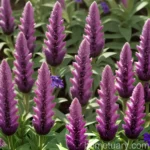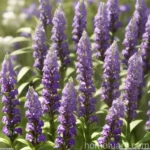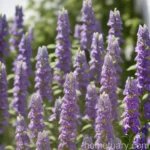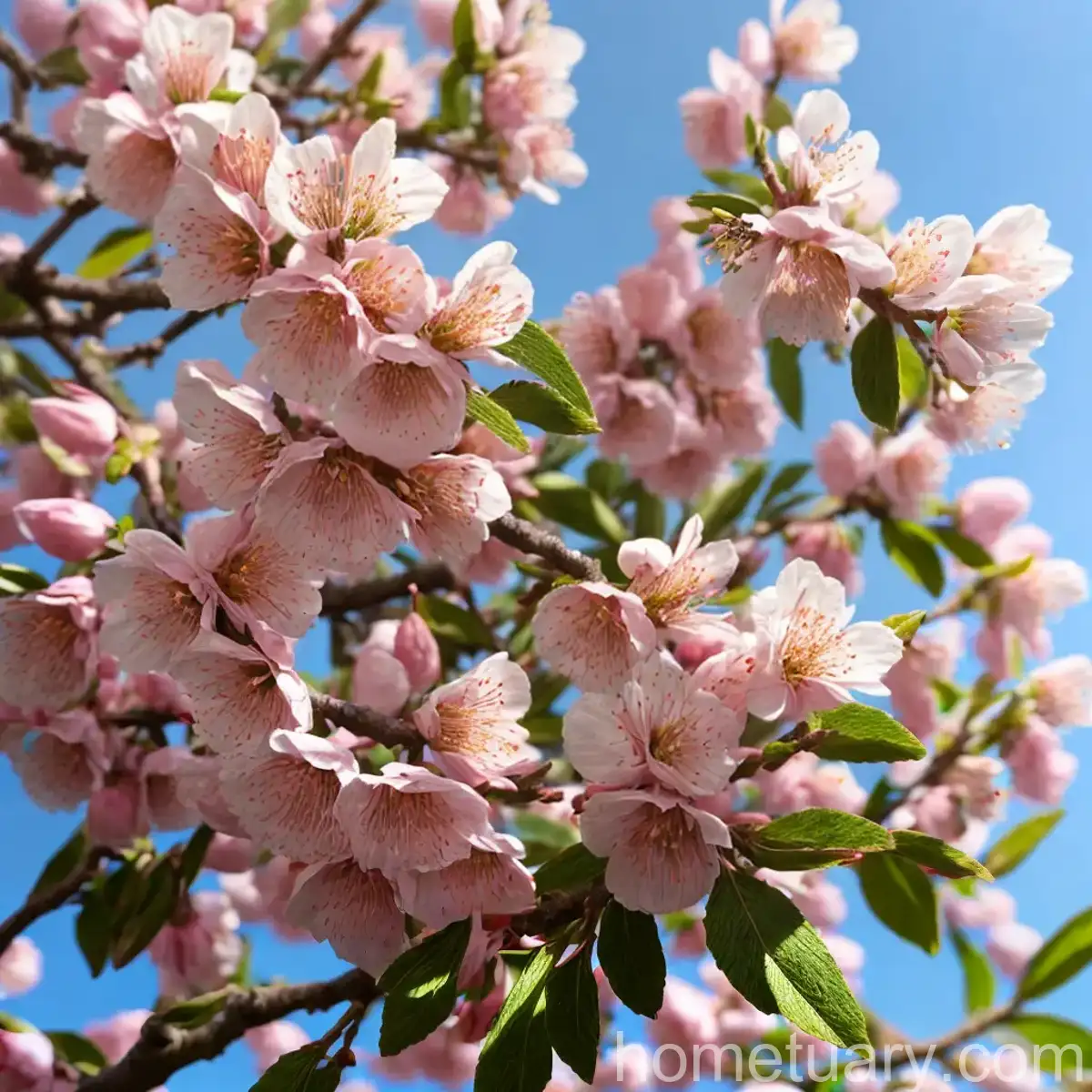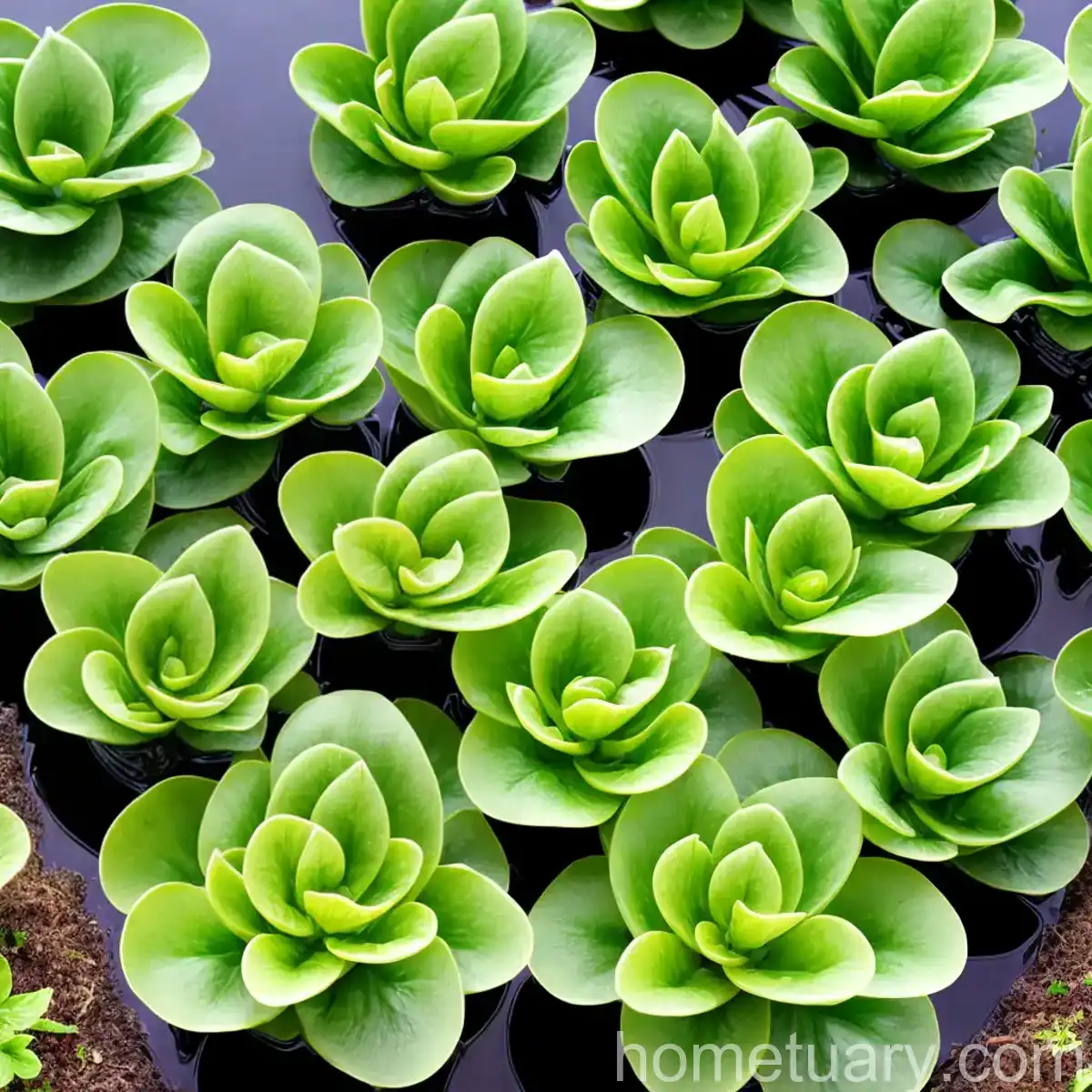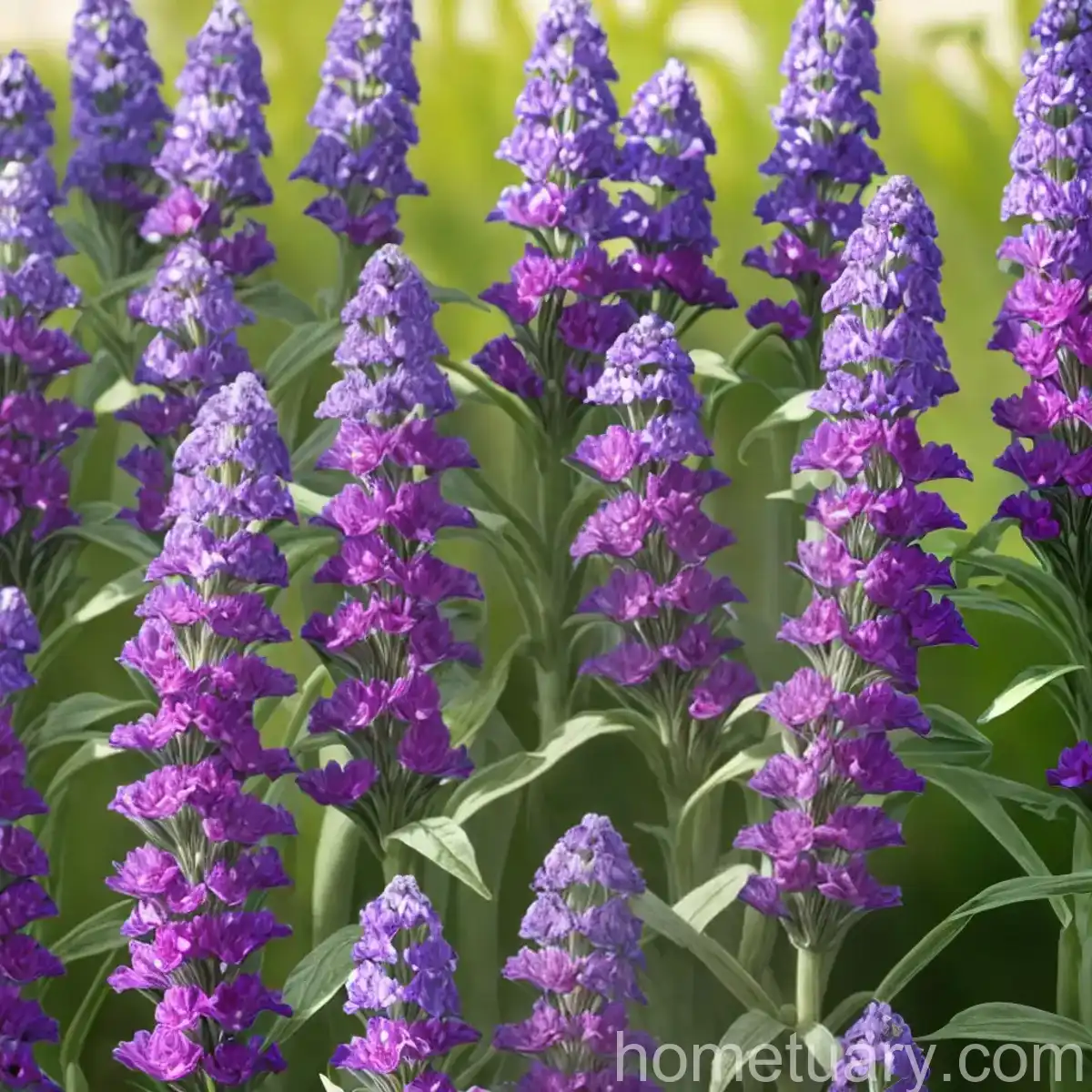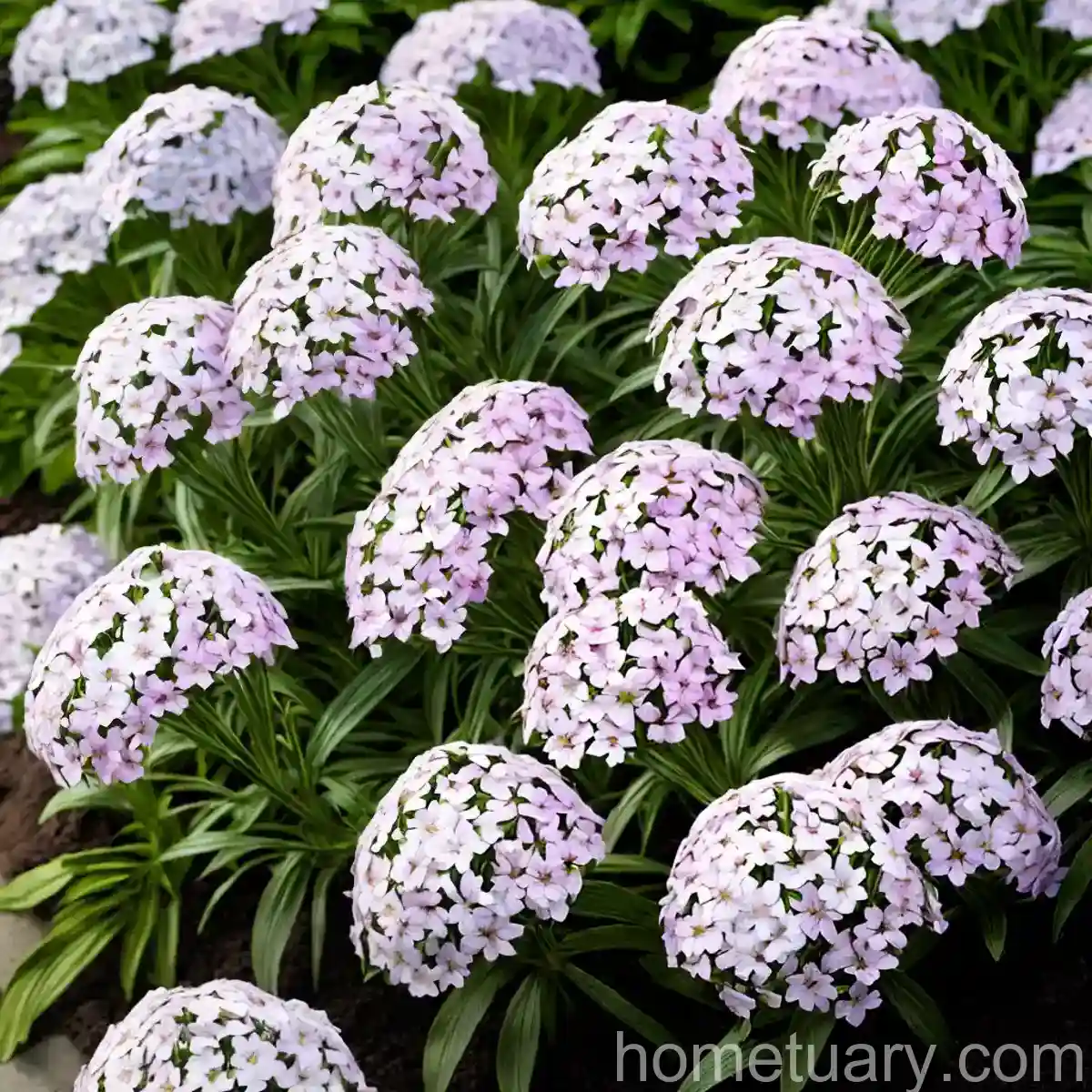The Beauty of Large Beardtongue (Penstemon grandiflorus)
Welcome to the captivating world of large beardtongue, scientifically known as Penstemon grandiflorus. This stunning perennial plant has been revered for its vibrant blooms and low maintenance requirements, making it a favorite among gardeners and landscaping enthusiasts. In this comprehensive guide, we will delve into the various facets of this remarkable plant, from its cultural significance to its propagation and care, while also exploring its impact on the surrounding ecosystem.
What is Penstemon grandiflorus?
Penstemon grandiflorus, commonly referred to as large beardtongue, is a species of flowering perennial plant within the Penstemon genus. Belonging to the Plantaginaceae family, large beardtongue is native to North America and is renowned for its elegant, tubular flowers that attract a myriad of pollinators.
Native to the prairies, open woodlands, and grasslands of the Central and Eastern United States, large beardtongue thrives in well-drained soils and ample sunlight. It is revered for its resilience and ability to flourish in various environmental conditions, making it an excellent choice for both novice and experienced gardeners alike.
Key Takeaways – Large Beardtongue (Penstemon grandiflorus)
- Scientific Name: Penstemon grandiflorus
- Common Names: Large beardtongue, Grandiflorus beardtongue, Large flowering penstemon
- Family: Plantaginaceae
- Origin: North America
- Lifespan: Perennial
- Flower Color: Shades of purple, blue, pink, and white
- Growth Habit: Upright, clump-forming
- Attracts: Bees, butterflies, and hummingbirds
- Drought Tolerance: High
- USDA Hardiness Zones: 3 – 8
Culture
Large beardtongue holds significant cultural importance, especially among Native American tribes. Traditionally, various parts of the plant were utilized for medicinal and ceremonial purposes. The Cherokee tribe, in particular, used the roots and leaves of Penstemon species to prepare herbal remedies for snakebites and to treat respiratory ailments. Additionally, the vibrant blooms of large beardtongue were incorporated into traditional rituals and ceremonies, symbolizing strength and resilience.
Uses
The uses of large beardtongue extend beyond its ornamental value, encompassing ecological, medicinal, and landscaping applications.
-
Ecological Importance: Large beardtongue plays a vital role in supporting local pollinators, including bees, butterflies, and hummingbirds. The nectar-rich flowers provide a valuable food source for these pollinators, contributing to the overall biodiversity of the ecosystem.
-
Medicinal Properties: While large beardtongue is primarily cultivated for its aesthetic appeal, some Native American tribes historically used Penstemon species for their purported medicinal properties. Contemporary research is ongoing to explore the potential pharmacological benefits of these plants.
-
Landscaping: Large beardtongue is a popular choice for landscaping due to its low maintenance requirements and striking floral display. Its adaptability to various soil types and its drought tolerance make it an attractive option for garden borders, rock gardens, and naturalized landscapes.
Growing Conditions
Successful cultivation of large beardtongue is dependent on providing optimal growing conditions to promote healthy growth and prolific blooming. Understanding the plant’s water, sunlight, fertilizer, soil, and pruning requirements is essential for nurturing a thriving large beardtongue garden. Let’s explore each of these factors in detail.
Water
Large beardtongue, like many native prairie plants, demonstrates remarkable drought tolerance once established. However, during the initial phases of growth and in prolonged periods of dry weather, regular watering is crucial to facilitate root establishment and maintain overall plant vigor. Consider the following watering guidelines for large beardtongue:
-
Establishment Phase: Provide consistent moisture during the first growing season, especially if planted in late spring or summer. Water deeply to encourage strong root development, and monitor soil moisture levels to prevent wilting.
-
Mature Plants: Once established, large beardtongue generally thrives in dry to medium moisture conditions. Water the plants during prolonged dry spells, focusing on providing deep, infrequent irrigation to encourage deep root growth and drought resistance.
-
Soil Drainage: Good soil drainage is essential to prevent waterlogged conditions, which can be detrimental to the plant’s health. Avoid planting large beardtongue in areas with poor drainage to mitigate the risk of root rot and other moisture-related issues.
Sunlight
As a sun-loving perennial, large beardtongue flourishes in full sun to partial shade. Adequate sunlight is crucial for promoting robust growth and bountiful blooming. When selecting a planting site for large beardtongue, prioritize locations that offer the following sunlight conditions:
-
Full Sun: Large beardtongue exhibits the best floral display when grown in full sun, defined as a minimum of six hours of direct sunlight per day. Planting in full sun locations enhances flower production and overall plant vigor.
-
Partial Shade: In regions with intense summer heat or prolonged periods of scorching sunlight, providing afternoon shade can help protect the plant from excessive stress. Large beardtongue can thrive in filtered sunlight or areas that receive dappled shade without compromising its flowering potential.
Fertilizer
Large beardtongue generally thrives in nutrient-poor soils and does not require regular fertilization, especially when grown in its native habitat. However, if the soil is particularly poor or if the plant shows signs of nutrient deficiency, a balanced, slow-release fertilizer can be applied in early spring just before new growth emerges. Take note of the following considerations when fertilizing large beardtongue:
-
Soil Test: Conduct a soil test to assess the existing nutrient levels and pH of the soil. This analysis can guide the appropriate application of fertilizers, ensuring that the plant’s nutritional requirements are met without causing imbalances.
-
Fertilizer Type: Select a balanced, slow-release fertilizer with an N-P-K (nitrogen, phosphorus, potassium) ratio of 10-10-10 or similar. Apply the fertilizer sparingly around the base of the plant, avoiding direct contact with the foliage to prevent potential leaf burn.
-
Frequency: Apply fertilizer only if the plant displays visible signs of nutrient deficiency, such as pale leaves or stunted growth. Avoid over-fertilization, as large beardtongue is adapted to thrive in low-fertility soils.
Soil
Large beardtongue thrives in well-drained, sandy or loamy soils with a slightly alkaline to neutral pH. The plant showcases excellent adaptability to various soil types, provided that adequate drainage is maintained. Consider the following soil-related aspects when cultivating large beardtongue:
-
Drainage: Ensure that the planting site offers good drainage to prevent water accumulation around the roots. If the soil is heavy or compacted, amending it with organic matter, such as compost or peat moss, can improve both drainage and soil structure.
-
Soil pH: Aim for a soil pH within the range of 6.0 to 7.5, which is conducive to nutrient availability and healthy plant growth. If necessary, adjust the pH using organic soil amendments or limestone to create a suitable growing environment for large beardtongue.
-
Soil Preparation: Prior to planting, prepare the soil by loosening it to a depth of 12 to 15 inches, removing any debris or weeds, and incorporating organic matter to enhance soil fertility and structure.
Pruning
Pruning large beardtongue is relatively minimal, with the primary focus being the removal of spent flowers to encourage prolonged blooming and prevent self-seeding. Additionally, periodic thinning of the plant can help maintain its vigor and aesthetic appeal. Here are some key aspects to consider when pruning large beardtongue:
-
Deadheading: Regularly deadhead the faded flowers by snipping them off just above the nearest set of healthy leaves. This practice encourages the development of new flower buds and prolongs the overall flowering period.
-
Thinning: In late spring or early summer, assess the plant for any overcrowded or weak stems, and selectively prune them at the base to improve air circulation and promote the growth of robust, healthy shoots.
-
Late Season Pruning: After the flowering period, consider a light trimming of the entire plant to shape its appearance and tidy up its growth. Avoid cutting back into woody stems, as this can impede next year’s growth.
Propagation
The propagation of large beardtongue can be achieved through various methods, including seed sowing, division, and stem cuttings. Each approach offers unique advantages and considerations, allowing gardeners to expand their collection of these enchanting plants. Let’s explore the key techniques for propagating large beardtongue:
Seed Propagation
Growing large beardtongue from seeds is a rewarding and cost-effective method of propagation. The process begins by collecting mature seeds from the dried seed heads of the plant, typically in late summer or early autumn. When sowing large beardtongue seeds, consider the following guidelines:
-
Seed Collection: Once the seed heads have matured and turned brown, collect the seeds and allow them to dry further in a well-ventilated area. Gently thresh the seeds to remove the chaff and store them in a cool, dry location.
-
Sowing Depth: Lightly press the seeds into the prepared soil, as they require exposure to light for germination. Maintain consistent soil moisture during the germination period, which typically ranges from one to three weeks.
-
Overwintering: Depending on the region and climate, the newly established seedlings may benefit from protection during the winter months. Mulching the area around the seedlings can help insulate the soil and protect the young plants from frost.
Division
Dividing established large beardtongue clumps is an effective means of propagation that also helps rejuvenate the parent plant. Dividing the plant every few years can prevent overcrowding and promote healthy growth. Consider the following steps when dividing large beardtongue:
-
Timing: Early spring, just as new growth emerges, is an ideal time to divide large beardtongue. Cool, overcast days are preferred to minimize stress on the transplanted divisions.
-
Root Division: Carefully dig up the entire clump of large beardtongue, ensuring that an ample portion of the root system is included. Gently tease the roots apart, and use a sharp, sterilized tool to divide the clump into sections, each with a healthy set of roots and foliage.
-
Transplanting: Replant the divisions at the appropriate spacing, incorporating organic matter into the planting site to improve soil fertility and water retention. Water the transplants thoroughly and monitor their progress as they establish in their new location.
Stem Cuttings
The propagation of large beardtongue through stem cuttings offers a rapid method of producing new plants that are genetically identical to the parent. Selecting healthy, non-flowering shoots for cuttings is essential for success. Follow these steps to propagate large beardtongue from stem cuttings:
-
Cutting Selection: Choose non-flowering stems with healthy foliage, and use a sharp, sterile blade to take 4 to 6-inch cuttings. Remove the lower leaves, leaving a few upper leaves intact. Dip the cut end of the stems in a rooting hormone to stimulate root development.
-
Container and Medium: Plant the cuttings in a well-draining propagation medium, such as a mixture of perlite and peat, and maintain a consistently moist but not waterlogged environment. A clear plastic covering can be used to create a humid, enclosed atmosphere around the cuttings.
-
Root Development: Position the cuttings in a bright, indirect light location and maintain uniform moisture levels to support the development of roots. After several weeks, the cuttings should establish roots and can be gradually transitioned to standard growing conditions.
Container Gardening
Large beardtongue can be successfully cultivated in containers, offering a versatile way to incorporate its beauty into various settings, from small urban gardens to patios and balconies. When growing large beardtongue in containers, certain considerations related to container selection and maintenance are essential. Here’s a guide to container gardening with large beardtongue:
Container Selection
Choosing an appropriate container is fundamental to the success of growing large beardtongue in a confined environment. Consider the following factors when selecting a container:
-
Size: Opt for a container with a diameter of at least 12 inches and a depth of 10 to 12 inches, providing ample space for the plant’s root system to establish and thrive.
-
Drainage: Ensure that the container has adequate drainage holes to prevent waterlogging, which can be detrimental to the plant’s health. Consider elevating the container on pot feet to facilitate drainage and prevent root rot.
-
Material: Select containers made of durable materials with good insulation properties, such as plastic, ceramic, or fiberglass. These materials offer sufficient insulation against temperature fluctuations and minimize moisture loss.
Maintenance
Proper maintenance is pivotal in container gardening to ensure the long-term health and vitality of large beardtongue. Pay attention to the following maintenance tasks when growing large beardtongue in containers:
-
Watering: Monitor the soil moisture levels regularly and water the plant when the top inch of the soil feels dry. Container-grown plants may require more frequent watering than those planted in the ground, especially during hot, dry periods.
-
Fertilization: Apply a balanced, slow-release fertilizer to container-grown large beardtongue in early spring, following the recommended dosage guidelines. Avoid over-fertilizing, as excess nutrients can lead to imbalances and potentially harm the plant.
-
Winter Care: In regions with harsh winters, consider protecting container-grown large beardtongue from freezing temperatures by relocating it to a sheltered area or insulating the container with specialized covers or wraps.
-
Container Inspection: Periodically assess the condition of the container, checking for signs of damage, moisture retention, or root crowding. Repot the plant into a slightly larger container if it outgrows its current space.
Popularity
Large beardtongue has garnered widespread popularity among gardeners, horticulturalists, and landscaping enthusiasts due to its captivating floral display, low maintenance requirements, and ecological significance. This versatile plant has earned its place as a cherished addition to gardens, public landscapes, and naturalized areas. Here’s why large beardtongue has emerged as a celebrated plant:
-
Floral Beauty: The stunning, tubular blooms of large beardtongue, available in an array of captivating colors, including rich purples, soothing blues, delicate pinks, and pristine whites, have captivated the hearts of plant enthusiasts.
-
Eco-Friendly Plant: Large beardtongue’s role in supporting pollinators, such as bees, butterflies, and hummingbirds, has elevated its status as an environmentally beneficial plant, contributing to the conservation of vital pollinator populations.
-
Low Maintenance: With its innate ability to thrive in diverse growing conditions and withstand periods of drought, large beardtongue requires minimal intervention, making it an attractive choice for gardeners seeking low-maintenance plants.
-
Versatile Landscaping: The adaptability of large beardtongue to a variety of landscaping styles, from formal gardens to wildflower meadows, has broadened its appeal as a versatile and aesthetically pleasing plant for diverse settings.
Common Diseases
While large beardtongue is generally resistant to most diseases and pests, it may occasionally encounter issues related to environmental stress or cultural practices. Understanding the common diseases affecting large beardtongue, along with appropriate disease management strategies, is essential for preserving the health of the plant. Let’s examine some prevalent diseases that can impact large beardtongue:
| Disease | Symptoms | Management |
|---|---|---|
| Powdery Mildew | White or gray powdery patches on foliage | Improve air circulation, avoid overhead watering, apply fungicides if necessary. |
| Rust | Orange to brown pustules on leaves | Remove and dispose of infected plant parts, apply fungicides preventively. |
| Root Rot | Wilting, yellowing foliage, decayed roots | Ensure proper drainage, avoid overwatering, and use well-draining soil. |
Disease Diagnosis
Effectively diagnosing and controlling diseases in large beardtongue is crucial for maintaining the plant’s vitality and ornamental appeal. It is essential to promptly address any signs of disease to prevent the spread and minimize the impact on the plant. Here are some diagnostic steps and management strategies for common diseases affecting large beardtongue:
-
Observation: Regularly inspect the foliage and stems for any abnormalities, such as powdery coatings, discolored patches, or wilting. Note any changes in the plant’s growth and overall appearance.
-
Identification: Identify the specific symptoms and signs associated with common diseases, such as powdery mildew, rust, and root rot, to accurately pinpoint the underlying issue affecting the plant.
-
Cultural Practices: Implement cultural practices that promote overall plant health, such as ensuring proper watering, providing adequate sunlight, and maintaining good air circulation, to prevent disease development.
-
Treatment: If disease symptoms are detected, consider applying appropriate fungicides or bactericides following the recommended application guidelines. Additionally, remove and dispose of severely affected plant parts to prevent the spread of the disease.
Common Pests
Large beardtongue is relatively resistant to pest infestations, owing to its natural repellent properties and robust growth habits. However, certain pests may occasionally pose a threat to the plant, particularly under conditions of stress or environmental imbalance. Here are some common pests that may impact large beardtongue:
- Spider Mites: These tiny arachnids may attack large beardtongue, causing stippling and webbing on the foliage, especially in dry, dusty conditions.
- Aphids: Soft-bodied insects that can cluster on the tender shoots and succulent growth, potentially causing distortion and stunted growth.
- Thrips: These slender insects feed on the flower buds and foliage, causing stippling, distortion, and browning of the affected plant parts.
Botanist’s Tips
As a botanist specializing in native flora, I offer the following expert tips to enhance the cultivation and enjoyment of large beardtongue in garden settings:
-
Native Plant Gardens: Incorporate large beardtongue into native plant gardens to create vibrant, biodiverse landscapes that support local wildlife and showcase the natural beauty of indigenous plant species.
-
Companion Planting: Pair large beardtongue with other prairie natives, such as coneflowers (Echinacea species), prairie blazing star (Liatris pycnostachya), and purple prairie clover (Dalea purpurea), to create visually stunning and ecologically beneficial plant communities.
-
Wildlife Habitat Enhancement: Leverage the attractiveness of large beardtongue to support pollinators and beneficial insects, contributing to the creation of wildlife-friendly habitats within urban and suburban environments.
Fun Facts
Uncover intriguing and lesser-known facts about large beardtongue that highlight its unique characteristics and ecological significance:
- Large beardtongue, with its tubular flowers, is a favorite nectar source for long-tongued bees and humming





